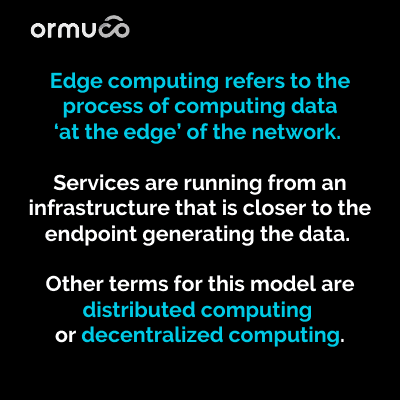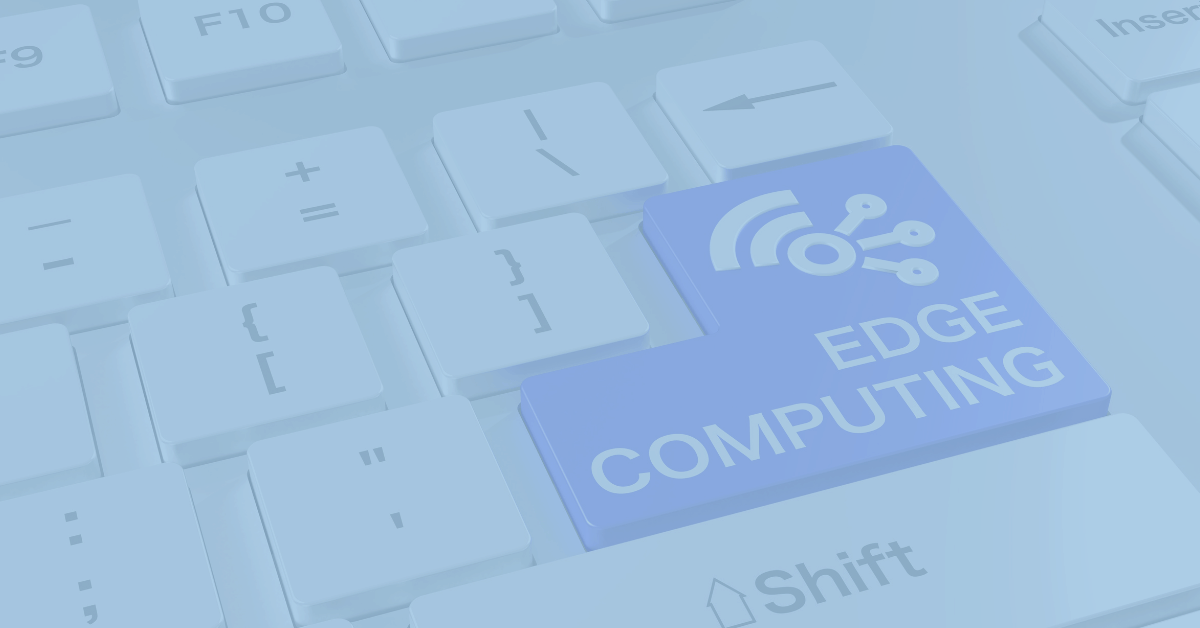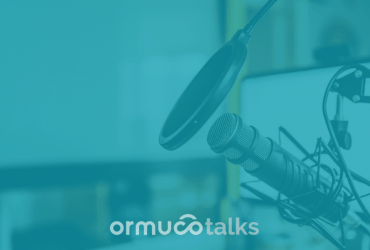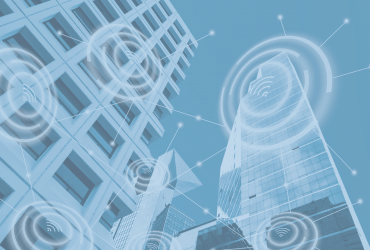Does edge computing spell the end of cloud computing? Should we use them both? How can we be sure we’re using the right approach? We cover the ‘edge computing vs. cloud computing’ debate in this article to help you clear things out.
Need a Definition of Edge Computing?

Visit the “What Is Edge Computing” page for more
Edge Computing Will Decrease Latency, Enhancing Efficiency for Real-Time Analytics Apps
The rise of interest for edge computing has followed the rise of the Internet of Things (IoT). Webopedia refers to it as the ever-growing network of physical objects that feature an IP address for internet connectivity, and the communication that occurs between these objects and other Internet-enabled devices and systems.
‘Ever growing’ is a well-chosen term indeed, especially as Cisco predicts that 50 billion devices will be connected to the Internet of Things (IoT) by 2020. We can just imagine the level of network bandwidth usage this is going to generate over the next years if we keep up with the cloud computing approach. Real-time processing needs infrastructure at the edge or close to the data source.
Luckily, edge nodes are ideal to solve issues such as network bandwidth overuse and lack of flexibility that are often caused by large-scale, centralized cloud infrastructures. So, when it comes to comparing edge computing vs. cloud computing, the key benefit of an edge computing approach is that it offers much lower latency for client applications. ‘First-step’ computing can be done at the ‘edge’ of a system, reducing latency dramatically and ensuring high uptime and reliability. In turn, this makes IoT applications more efficient.
Edge Computing Will Provide the Local Processing Power That Cloud Computing Can’t
Edge computing is, by design, a distributed architecture rather than a centralized one. It responds to the processing need for one application or set of applications, connecting smart devices in one regional area to processing power locally.
In other words, edge computing tends to have an overall lower processing load, compared to centralized cloud computing architectures. However, this is not a bad thing – because edge nodes are used to:
- Quickly analyze data they receive from client devices
- Send back the results of the computation to these devices
Also, because they act as ‘gateways’, they’ll send the processed information to a central cloud system for long-term storage or further treatment. Thus, the name ‘edge gateways’.
Cloud Computing Is Ancillary to Edge Computing
As we mentioned above, edge computing is designed to address some of the cloud’s shortcomings. These shortcomings include geographical inflexibility, data privacy and high latency.
In return, cloud computing offers the ancillary solution for the needs that edge computing cannot cover. We’re speaking of long-term archival and retrieval of data, resource-consuming processing of large data sets, periodical reporting, etc.
This means edge computing and cloud computing can complement each other perfectly, resulting in a more efficient and responsive architecture. While the ‘edge computing vs. cloud computing’ debate will keep going, it seems clear that a balanced use of both technologies will benefit the whole IT community.
Edge Computing vs. Cloud Computing – How Ormuco Will Help You Beat the Game
The question of edge computing vs. cloud computing is not a question of which one is better. It is rather a question of how you can integrate both into your options, as a service provider.
Cloud computing and edge computing work effectively together. But, it takes an intelligent edge cloud full-stack platform such as Ormuco to manage them successfully as one entity.
Providing edge computing services will help you develop new markets and bring in more customers and clients. This is even more so with recent use cases like automated driving, facial recognition from security cameras, and more.
With Ormuco Edge PaaS and Decentralization, you’ll be able to address many of the drawbacks of a traditional cloud computing stack. You’ll be able to integrate both service offerings into a single one.
Ormuco Stack brings edge computing to reality by providing:
- Fully automated system and application deployment
- Intelligent edge gateway management
- Auto-scaling and load balancing
- Seamless authentication in scenarios involving roaming devices
- A billing engine so you can easily evaluate and price at the edge.
Ormuco uses the most recent and stable open source technologies and benefits from the latest innovations from the open-source developers’ community. It supports bare metal servers, containers, virtual machines, RAW and QCOW2 images, and includes a marketplace full of approved applications and databases.
Ormuco for Edge Computing Deployments: Ask for your demo!
We would be happy to give you more information about our products and service. Ask any questions you may have about edge computing vs. cloud computing! Go to https://go.ormuco.com/demo to schedule your appointment.




